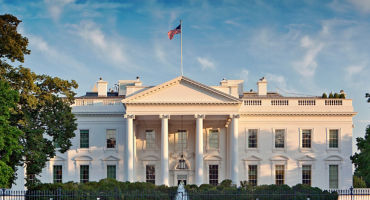- Macro Strategist
Skip to main content
- Funds
- Insights
- Capabilities
- About Us
- My Account
Our Funds
Fund Documents
Global Multi-Strategy Fund
The views expressed are those of the author at the time of writing. Other teams may hold different views and make different investment decisions. The value of your investment may become worth more or less than at the time of original investment. While any third-party data used is considered reliable, its accuracy is not guaranteed. For professional, institutional, or accredited investors only.
With the US government having reached its statutory borrowing cap in January, Treasury Secretary Janet Yellen invoked “extraordinary measures” and signaled that the limit must be raised or suspended by early June to avoid a technical default on the government’s obligations. While a specific deadline (the so-called “X date”) is difficult to pinpoint and could extend to September, even that may not be enough time for this badly divided Congress.
In 2011, we saw the cost of debt-ceiling brinksmanship when Standard & Poor’s downgraded its rating on US sovereign debt. Today, a similar outcome is not out of the question: Given the country’s soaring deficits and debt, continued political dysfunction will not be looked at kindly by rating agencies.
The price of US sovereign credit default swaps, an insurance policy against default, has already soared to levels last seen in 2011 — well ahead of the upcoming political battle and a clear indicator of the market’s level of concern.
The 2011 debt-ceiling fiasco may offer a few clues about today’s market risk. Between July and October of that year, US stocks (as proxied by the S&P 500 Index) fell 18%. Gold showed that it can be a good hedge in a debt-cap crisis, performing well during the 2011 episode. On the fixed income side, yields on short-term US Treasuries spiked as the X date approached, a sign of the coming increase in government borrowing costs. However, yields at the longer end moved lower amid concerns about the growth rate of the US economy at a time when other global economies were fragile.
Today, it is less clear whether a similar outcome would result, given that the creditworthiness of the US government is on shakier ground. A lot will depend on what else is happening globally as this potential standoff unfolds. I think it will also be worth watching the impact negative sentiment could have on the repo and commercial paper markets. If “debt prioritization” plans move forward (to bide time, some Republicans have proposed prioritizing certain debt payments) and risk aversion becomes pervasive, the Fed’s repo facility may accentuate an unwillingness to use cash, further constraining market liquidity.
Normally a debt-ceiling impasse is broken by good faith compromises and bipartisan cooperation, and President Biden does have a good relationship with House Speaker Kevin McCarthy. But McCarthy will likely have a difficult time controlling his party. While Biden would like a clean increase in the debt cap with no bells and whistles attached, leaving the spending fight for the 2024 fiscal-year budget, Republicans are already demanding that spending cuts be part of the deal as they focus on the deficit and attempt to portray Democrats as wasteful.
In my estimation, McCarthy will need to corral three sets of Republicans in the House of Representatives in order to arrive at a deal. The more mainstream Republicans (about 30%) would like to rein in entitlements but not default; regular MAGA republicans (about 60%) have signaled anger about the size of government and are demanding substantial cuts in spending; and the Freedom Caucus MAGA Republicans (about 10%) say they will hold out for a government shutdown rather than raise the debt ceiling.
It's possible the “blame game” may backfire on the Republicans, as we saw in 2011, when the GOP-led Congress, not Democratic President Obama, received the lion’s share of the blame for stalling the debt-ceiling process. There was a similar public opinion verdict during the 21-day government shutdown in 1995. In recent polls, Democrats have earned a larger share of the blame for the current predicament, but they maintain the upper hand over Republicans. Still, the extreme partisan divide in the US suggests that Republican voters expect their leaders to stand up to the president, making compromise difficult, at least at the outset.
Ultimately, it could be that market discipline is the only thing that will bring the parties to the table, but here are some other possible paths forward, from most to least likely:
The economic risks are, of course, substantial. Should debt prioritization be enacted, I estimate the reduction in economic activity could reach US$200 – US$250 billion per month, given the size of the deficit. If transfers were to stop suddenly, the contraction in activity could be amplified by precautionary measures taken by households or corporations.
I’ll be tracking developments and offering insights on this critical front in the coming weeks and months. In the meantime, you can find additional thoughts from two of my colleagues here.
Expert

Chart in Focus: Three reasons to keep the faith in US credit quality
Continue readingWhat’s the Fed got to do with it? The impact of rate cuts on CLO equity
Continue readingThe Fed architecture under scrutiny: What are the investment implications?
Continue readingTwilight zone: how to interpret today’s uncertain macro picture
Continue readingURL References
Related Insights
Stay up to date with the latest market insights and our point of view.

FOMC: Easing into uncertainty
Fixed Income Portfolio Manager Jeremy Forster profiles the Fed's December rate cut, labor market trends, inflation pressures, and the role of anticipated changes to FOMC leaders in 2026.

Chart in Focus: Three reasons to keep the faith in US credit quality
Our fixed income experts highlight the resilience of US institutional credibility.

What’s the Fed got to do with it? The impact of rate cuts on CLO equity
Our CLO experts discuss the implications of Fed rate cuts on CLO equity, emphasizing its potential to maintain income amidst rate sensitivity challenges in other credit assets.

The Fed architecture under scrutiny: What are the investment implications?
Macro Strategist Juhi Dhawan looks at how changes in the Federal Reserve's personnel and decision making could impact policy, the US dollar, and financial markets.

Twilight zone: how to interpret today’s uncertain macro picture
Macro Strategist John Butler and Investment Director Marco Giordano explore how to interpret today’s uncertain macroeconomic picture and its key implications.

Rethinking the Fed’s dual mandate
Is it time for a fresh perspective on the dual mandate? Fixed Income Portfolio Manager Brij Khurana explores the potential benefits of reorienting monetary policy toward maximizing productivity.

One Big Beautiful Bill: Why it’s “buy now, pay later” for markets
Multi-Asset Strategist Nanette Abuhoff Jacobson weighs the near-term benefits of the recently enacted US tax and spending bill against the longer-term costs, and suggests several investment implications.

Weighing the economic winners and losers of the One Big Beautiful Bill Act
Macro Strategist Juhi Dhawan unpacks the impact of One Big Beautiful Bill Act, including its potential effect on economic growth, corporate earnings, and the US government deficit and debt.

Severance: The split between the economy and the markets
While markets have bounced back since Liberation Day, policy changes and macro data bear watching. Heading into the second half of 2025, we're focused on relative opportunities across asset classes created by disconnects and divides between markets and economies.

The power of positive and pragmatic thinking
While markets have a lot to worry about, from government policy to geopolitics, Global Investment and Multi-Asset Strategist Nanette Abuhoff Jacobson looks at the world from another angle: What could go right? She offers five reasons for positive thinking and considers the investment implications.

International equities: Five reasons they may not be a one-hit wonder
Global Investment and Multi-Asset Strategist Nanette Abuhoff Jacobson explains why those who doubt the staying power of the recent outperformance of international equities may want to reconsider.
URL References
Related Insights